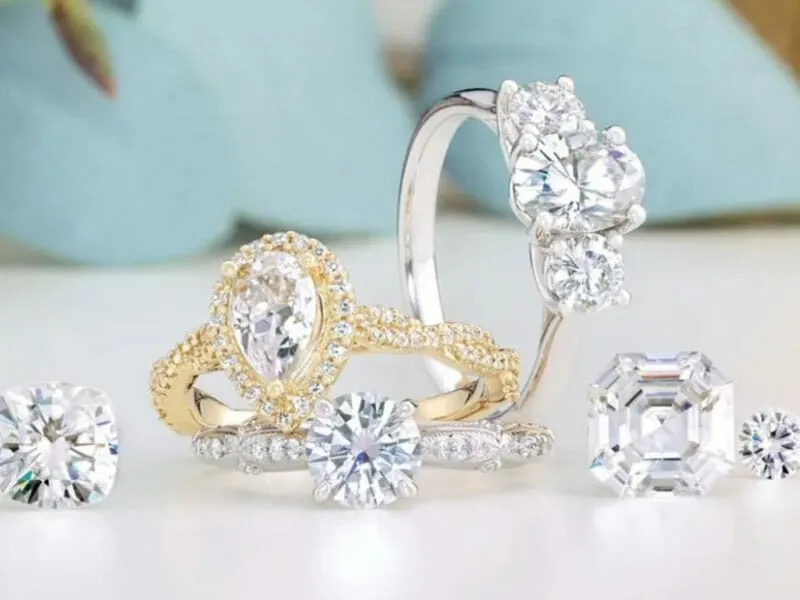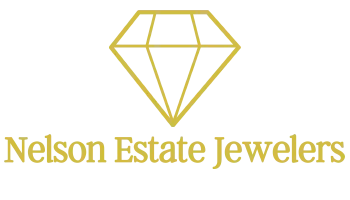
The Clear Cut Truth About Diamond Prices
If you have spent any time researching or checking out diamond prices online, you may quickly learn that pricing is all over the board.
But what exactly affects the overall price of a diamond?
While there are a few different factors that determine the price of a diamond, carat weight is the leading factor that has the largest impact when that price is determined.
In fact, there are many diamonds out there that are cut to maximize weight instead of visual performance, which is unfortunately a trap that many consumers fall into when purchasing a diamond.
Achieving a better cut quality usually requires more weight to be removed from the stone, which can cause a decrease in overall value, so it is clear why some cutters may opt to maintain weight versus cutting a diamond to ideal proportions.
Other than carat weight, another factor that influences the price of a polished diamond is the cut quality; the value of a diamond can increase or decrease drastically based on its cut. A diamond’s color and clarity grade also come in to play when determining value.
The Pricing System Based on Diamond Carat Weight
Diamond prices do not rise in line with their quality and size. As a quick example, imagine you are considering the purchase of a one carat diamond for $8,000. If upon further consideration you decide that you want a two carat of the same quality instead then that does not mean that it would only cost $16,000 for a two carat diamond; it would cost significantly more than the sum of two individual one carat stones. This is because there is also a rarity factor as the size of a diamond increases.
Let’s take a look at gold pricing for a moment in contrast. Two pieces of gold that weigh the same would be worth just as much as a larger, single piece of gold of that same weight. Gold can be melted, combined, shaped, and reused for many things. Since you can’t melt two diamonds together to make a larger one then that explains why the larger diamond has a significantly higher cost, and why you can’t just double the price of two one carats to equal the price of a two carat.
Getting back to the subject of rarity, smaller roughs are way more common during the mining process than larger roughs that weigh hundreds of carats. Which is why as the weight of the rough stone increases, the “price per carat” value also increases.
One thing to keep in mind while shopping for diamonds is that the most significant price jumps happen right at the half and full carat mark. If you’re shopping online and you come across a bunch of diamonds that are cut to exactly 1.00 carat or hitting the 0.50 mark right on the nose, then that’s exactly why.
Size Isn’t Everything
Some people get caught up with what a diamond’s carat weight says it is on paper. Bigger is always better, right? Not always. The size of a diamond isn’t what unlocks its true beauty.
A huge diamond can’t be that fun to show off if it’s dull, lifeless, and cloudy. This is where the other aspects of the 4C’s of diamond quality come in. While a visually unappealing diamond may have something to do with poor color or clarity, usually the cut quality is what determines if a diamond is going to truly sparkle or be a lifeless dud (and sometimes it is a combination of all three).
When shopping for a diamond, cut is the most important thing to focus on before anything. A stone that is cut too deep looks much smaller from the top, and there’s no sense in paying the price for a large diamond just for it to look the same as something that would be a fraction of the price. Plus, the deeper cuts don’t let as much light in, so the diamond may look dark and dreary as a result. On the other hand, when cut too shallow a diamond can have a watery appearance; it may be pretty when it is perfectly clean, but any dirt or oil kills the brilliance instantly.
If you come across a diamond online and the price seems too good to be true then you have to ask yourself why that is. A diamond may be certified as a D Color/VVS Clarity, but if the cut quality isn’t up to par or the diamond has a strong blue fluorescence then the great color and clarity don’t really do much good in the grand scheme of things. This is why it is so important to physically see a diamond in person before purchasing. Your own eyes can tell you so much more about a diamond than the grading on paper can.
At the end of the day, if you have a set budget in mind and your personal preference leads you to wanting a certain carat size, it is safe to make compromises on the diamond’s color or clarity, but never on the cut. If the cut is ideal then you can safely opt for a lower color or clarity without visibly changing the overall beauty of the diamond.
To learn more about what to look for when shopping for a diamond, check out our Diamond Buying Guide




